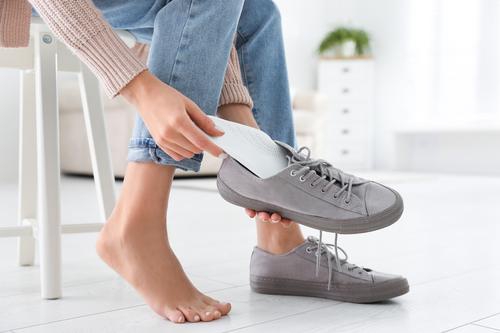If you're dealing with abductor hallucis pain, you'll need to heal this muscle located on the inner edge of your foot. But what is this muscle's job in your foot, why would it cause you pain, and how can you prevent or treat this form of discomfort? Keep reading to find out!
What is the abductor hallucis muscle?
This muscle makes it possible for you to bend your big to or move it sideways. At the same time, it also provides support to the side of your arch located on the foot's inner border. At times, you may develop abductor hallucis pain. And that's usually the result of trauma to your inner foot, or overuse from spending too much time on your feet.
Who's at risk for abductor hallucis pain?
Certain factors can increase your risk for this injury. People who choose unsupportive foot wear, or who have flat feet, are more likely to experience this kind of foot pain. If you gain a lot of weight, or suddenly increase your activity levels, you may also develop this form of muscle pain. And, if you work at a job where you're often on your feet, especially if you have to climb a lot of stairs, your risk will increase as well.
Signs and Symptoms
In addition to pain, abductor hallucis injuries could cause:
- Bruising
- Swelling
- Tenderness
- Bands of muscles that feel tight to the touch
- Numbness
- Tingling
If your pain is the result of a traumatic injury, you may also notice a popping sound that precedes your pain. After, you may see changes to the shape of your foot. It may be difficult to put weight on the injured foot, and the skin surrounding the injured area may be red and warm to the touch following the trauma.
Diagnosing abductor hallucis pain ![Examining a foot for abductor hallucis pain]()
This injury can be hard to diagnose, and is often mistaken for plantar fasciitis. in order to get you the right diagnosis, we'll conduct a thorough physical exam, taking a full review of all your symptoms and getting hands on with your feet to detect the source of your discomfort. We'll also observe the way you move your foot, ankle and toes, and may suggest additional imaging, including x-rays or MRIs, to rule out other injuries. Then, once we've confirmed an injury in your abductor hallucis, we'll come up with your complete treatment plan.
Treatment options
If you have abductor hallucis pain, we can start your pathway to relief by following a RICE (rest, ice, compression and elevation) protocol. Over-the-counter NSAIDs like Aleve can help reduce your pain and inflammation. And we can also explore stretches to relieve tension in your muscles, especially ones that target the muscles that run along the bottom of your foot, through your arch.
In some cases, these at-home treatment options will do the trick. But, at other times, we may need to fit you for custom orthotics to provide lasting pain relief. When you consistently wear these customized shoe inserts, they support your arch, reducing strain on your abductor hallucis and preventing overuse injuries. Additionally, many of our patients hope to address their pain using regenerative medicine treatments such as Shockwave Therapy. Designed to help stimulate your body's ability to heal itself, we proudly provide Shockwave treatments to our patients to painlessly target inflammation without invasive measures. Finally, in rare cases, you may need surgery to relieve your abductor hallucis pain. But that will always be our last resort. And it's usually only necessary if your muscle is compressing a nerve in your foot.
What will recovery look like?
After we begin treatment, how long will it take you to recover from your abductor hallucis pain? Of course, every patient's healing journey is different. And your recovery time will also depend on the severity of your injury when you first come into the office. (So coming in for treatment earlier is always better.) Still, for minor injuries, you can expect to feel better within weeks of beginning treatments. But for more serious conditions, complete recovery could take a few months.
Now, in addition to extending your recovery period, delaying treatment could lead to further complications. First, abductor hallucis pain can often lead to painful inflammation in other areas of your foot, including your plantar fascia. (That's the connective band of fibrous tissue that runs along the bottom of your foot.) You may also develop inflammation in your tibial posterior tendon, located behind the bone that runs along the inside of your ankle and goes beneath your arch.
Additionally, your risk for bunions increases when you have issues with your abductor hallucis. And that's because injuries to this muscle can affect the alignment of your toes, something that also happens when you have a bunion deformity. So, rather than risking further complications, or extending your recovery period, it's important to seek prompt treatment for this kind of foot pain. Or, better yet, let's work together to prevent injuries to this important foot muscle.
Preventing abductor hallucis pain
While not all foot pain is preventable, there are steps we can take to help protect your abductor hallucis muscle and prevent injury. To begin with, be very careful about the shoes you select. They should always fit you properly and provide plenty of arch support. If you have flat feet, you may need to add custom orthotics to your shoes in order to keep walking comfortably.
Next, try to reach and maintain a healthy weight, since excess pounds put additional pressure on this delicate muscle. Avoid standing for too long. (If your job keeps you on your feet all day, try to take frequent breaks. And during those periods, elevate your feet above the level of your heart to really give them a rest.) Finally, you can focus on boosting your balance and strengthening your leg and foot muscles in order to take some of the load off the smaller muscles in your feet, like the abductor hallucis.
Already experiencing pain on the inside of your foot or arch? Don't wait another minute to seek relief. Instead, reach out to our podiatrist in Houston and request a consultation with Dr. Andrew Schneider!
















